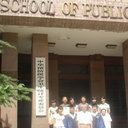Carbohydrate derivatives from the roots of Brassica rapa ssp. campestris and their effects on ROS production and glutamate-induced cell death in HT-22 cells.
Mots clés
Abstrait
Phytochemical investigation of the roots of Brassica rapa ssp. campestris led to the isolation of three new carbohydrate derivatives, namely sucrose 3,3',4'-triisovalerate (2), sucrose 6,3',4'-triisovalerate (3), and ethanone-1-C-β-d-glucopyranoside (3,7-anhydro-1-deoxy-d-glycero-d-gulo-2-octulose, 6), along with four known carbohydrate derivatives, 2,6,3',4'-tetraisovalerate (1), ethyl β-d-glucopyranoside (4), n-butyl β-d-fructofuranoside (5), and n-pentyl β-d-fructofuranoside (7), which were initially isolated from plants of the Brassica genus. Structures of the isolated compounds were established by spectroscopic analyses, including UV, IR, MS, and NMR. All of the isolated carbohydrate derivatives were evaluated to determine their effect on ROS production and glutamate-induced cell death in HT-22 cells. Compound 6 showed the most significant ROS reduction and a protective effect with IC50 values of 69.4 ± 3.8 μM and 4.96 ± 0.32 μM, respectively, which were equivalent to those of the positive control, Trolox.


